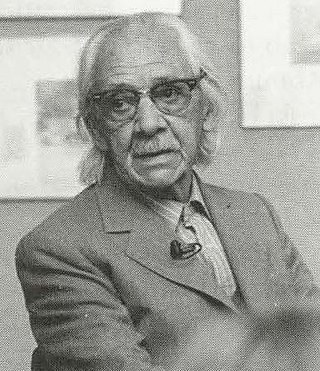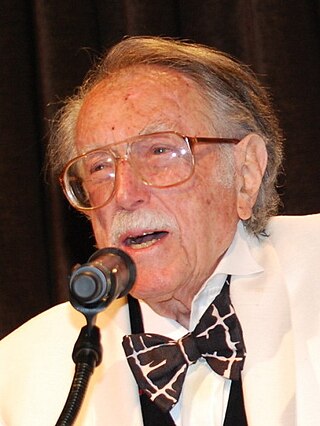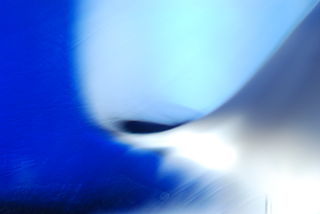Related Research Articles

Julia Margaret Cameron was an English photographer who is considered one of the most important portraitists of the 19th century. She is known for her soft-focus close-ups of famous Victorians and for illustrative images depicting characters from mythology, Christianity, and literature.

Edward Henry Weston was an American photographer. He has been called "one of the most innovative and influential American photographers" and "one of the masters of 20th century photography." Over the course of his 40-year career Weston photographed an increasingly expansive set of subjects, including landscapes, still lifes, nudes, portraits, genre scenes, and even whimsical parodies. It is said that he developed a "quintessentially American, and especially Californian, approach to modern photography" because of his focus on the people and places of the American West. In 1937 Weston was the first photographer to receive a Guggenheim Fellowship, and over the next two years he produced nearly 1,400 negatives using his 8 × 10 view camera. Some of his most famous photographs were taken of the trees and rocks at Point Lobos, California, near where he lived for many years.

André Kertész, born Andor Kertész, was a Hungarian-born photographer known for his groundbreaking contributions to photographic composition and the photo essay. In the early years of his career, his then-unorthodox camera angles and style prevented his work from gaining wider recognition. Kertész never felt that he had gained the worldwide recognition he deserved. Today he is considered one of the seminal figures of 20th century photography.
Uta Barth is a contemporary German-American photographer whose work addresses themes such as perception, optical illusion and non-place. Her early work emerged in the late 1980s and 1990s, "inverting the notion of background and foreground" in photography and bringing awareness to a viewer's attention to visual information with in the photographic frame. Her work is as much about vision and perception as it is about the failure to see, the faith humans place in the mechanics of perception, and the precarious nature of perceptual habits. Barth's says this about her art practice: “The question for me always is how can I make you aware of your own looking, instead of losing your attention to thoughts about what it is that you are looking at." She has been honored with two National Endowments of the Arts fellowships, was a recipient of the John Simon Guggenheim Fellowship in 2004‑05, and was a 2012 MacArthur Fellow. Barth lives and works in Los Angeles, California.
William Eggleston is an American photographer. He is widely credited with increasing recognition of color photography as a legitimate artistic medium. Eggleston's books include William Eggleston's Guide (1976) and The Democratic Forest (1989).

Eugène Atget was a French flâneur and a pioneer of documentary photography, noted for his determination to document all of the architecture and street scenes of Paris before their disappearance to modernization. Most of his photographs were first published by Berenice Abbott after his death. Though he sold his work to artists and craftspeople, and became an inspiration for the surrealists, he did not live to see the wide acclaim his work would eventually receive.

Oscar Gustave Rejlander was a pioneering Victorian art photographer and an expert in photomontage. His collaboration with Charles Darwin on The Expression of the Emotions in Man and Animals has assured him a position in the history of behavioural science and psychiatry.

Jean-Baptiste Gustave Le Gray was a French painter, draughtsman, sculptor, print-maker, and photographer. He has been called "the most important French photographer of the nineteenth century" because of his technical innovations, his instruction of other noted photographers, and "the extraordinary imagination he brought to picture making." He was an important contributor to the development of the wax paper negative.

A photogram is a photographic image made without a camera by placing objects directly onto the surface of a light-sensitive material such as photographic paper and then exposing it to light.

Manuel Álvarez Bravo was a Mexican artistic photographer and one of the most important figures in 20th century Latin American photography. He was born and raised in Mexico City. While he took art classes at the Academy of San Carlos, his photography is self-taught. His career spanned from the late 1920s to the 1990s with its artistic peak between the 1920s and 1950s. His hallmark as a photographer was to capture images of the ordinary but in ironic or Surrealistic ways. His early work was based on European influences, but he was soon influenced by the Mexican muralism movement and the general cultural and political push at the time to redefine Mexican identity. He rejected the picturesque, employing elements to avoid stereotyping. He had numerous exhibitions of his work, worked in the Mexican cinema and established Fondo Editorial de la Plástica Mexicana publishing house. He won numerous awards for his work, mostly after 1970. His work was recognized by the UNESCO Memory of the World registry in 2017.

Hand-colouring refers to any method of manually adding colour to a monochrome photograph, generally either to heighten the realism of the image or for artistic purposes. Hand-colouring is also known as hand painting or overpainting.

Margrethe Mather was an American photographer. She was one of the best known female photographers of the early 20th century. Initially she influenced and was influenced by Edward Weston while working in the pictorial style, but she independently developed a strong eye for patterns and design that transformed some of her photographs into modernist abstract art. She lived a mostly uncompromising lifestyle in Los Angeles that alternated between her photography and the creative Hollywood community of the 1920s and 1930s. In later life she abandoned photography, and she died unrecognized for her photographic accomplishments.
"in artistic matters Margaret was, of course, the teacher, Edward (Weston) the pupil" — Imogen Cunningham

Frederick H. Evans was an English photographer, best known for his images of architectural subjects, such as English and French cathedrals.

Julius Shulman was an American architectural photographer best known for his photograph "Case Study House #22, Los Angeles, 1960. Pierre Koenig, Architect." The house is also known as the Stahl House. Shulman's photography spread the aesthetic of California's Mid-century modern architecture around the world. Through his many books, exhibits and personal appearances his work ushered in a new appreciation for the movement beginning in the 1990s.
William A. Garnett was an American landscape photographer who specialized in aerial photography.

The Steerage is a black and white photograph taken by Alfred Stieglitz in 1907. It has been hailed by some critics as one of the greatest photographs of all time because it captures in a single image both a formative document of its time and one of the first works of artistic modernism.
There were men and women and children on the lower deck of the steerage. There was a narrow stairway leading to the upper deck of the steerage, a small deck right on the bow with the steamer.
To the left was an inclining funnel and from the upper steerage deck there was fastened a gangway bridge that was glistening in its freshly painted state. It was rather long, white, and during the trip remained untouched by anyone.
On the upper deck, looking over the railing, there was a young man with a straw hat. The shape of the hat was round. He was watching the men and women and children on the lower steerage deck...A round straw hat, the funnel leaning left, the stairway leaning right, the white drawbridge with its railing made of circular chains – white suspenders crossing on the back of a man in the steerage below, round shapes of iron machinery, a mast cutting into the sky, making a triangular shape...I saw shapes related to each other. I was inspired by a picture of shapes and underlying that the feeling I had about life."
Jane Reece was a highly acclaimed American pictorial photographer of the early 20th century. She lived most of her life in Dayton, Ohio and was active in the local, national and international photography scenes. During her 40-year career she exhibited in more than 100 photography salons and shows around the world, receiving many awards, prizes and honors. Reece is now recognized as one of Dayton's most prominent artists.

Dody Weston Thompson was a 20th-century American photographer and chronicler of the history and craft of photography. She learned the art in 1947 and developed her own expression of “straight” or realistic photography, the style that emerged in Northern California in the 1930s. Dody worked closely with contemporary icons Edward Weston, Brett Weston and Ansel Adams during the late 1940s and through the 1950s, with additional collaboration with Brett Weston in the 1980s.

Abstract photography, sometimes called non-objective, experimental or conceptual photography, is a means of depicting a visual image that does not have an immediate association with the object world and that has been created through the use of photographic equipment, processes or materials. An abstract photograph may isolate a fragment of a natural scene to remove its inherent context from the viewer, it may be purposely staged to create a seemingly unreal appearance from real objects, or it may involve the use of color, light, shadow, texture, shape and/or form to convey a feeling, sensation or impression. The image may be produced using traditional photographic equipment like a camera, darkroom or computer, or it may be created without using a camera by directly manipulating film, paper or other photographic media, including digital presentations.

John Moran was a pioneering American photographer and artist. Moran was a prominent landscape, architectural, astronomical and expedition photographer whose career began in the Philadelphia, Pennsylvania area during the 1860s.
References
http://www.getty.edu/art/exhibitions/teske/ Spirit into Matter: The Photographs of Edmund Teske. J. Paul Getty Museum